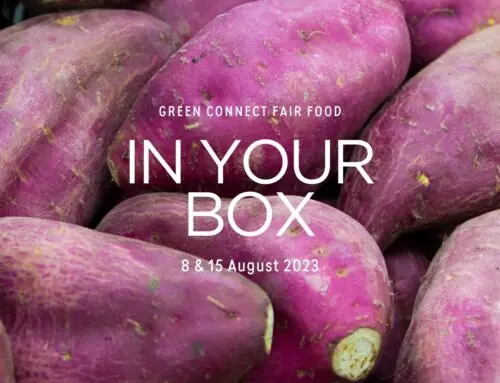Dealing with Pests
As part of our Fair Food team meeting last week, we were discussing our integrated pest management strategy and we got to talking about how there is a bit of confusion out in the community when it comes to organically certified pesticides. I’ve previously written about why we are not certified organic (see:https://green-connect.com.au/why-were-not-certified-organic/), but how we still adhere to organic principles and practices. And like all organic farms, we use organic pesticides as a part of a multi-pronged strategy to prevents pests from destroying our crops.
Our first line of defence against pests is diversity: diversity of crops, crop rotation, and biodiversity in non-commercial zones of the site. The more diverse an ecosystem is, the more resilient it is and so, as much as possible, we try to create an ‘aro-ecosystem’. Our second layer of defence against pests is hard-work and diligence: stripping yellowing leaves off the Brassicas to prevent the cabbage moths from laying eggs and systematically harvesting tomatoes so that the fruit flies don’t set up shop in an over-ripe fruit.
These preventative measures work most of the time, however, the natural world is a crazy place, and there are times when pests build a strong population and get the best of us. This is when we utilise the organic pesticides at our disposal, to reduce the pest’s populations and save our crops. The confusion around the use of these sprays and pellets to kill caterpillars, snails, and white fly is completely understandable: what’s the difference between these pesticides and the synthetic pesticides used in non-organic farming? The answer is relatively simple, there are organic products, and as such they break down in soil and water – harming only the pests they are targeting. The chemicals we use do not harm people, do not harm the soil, and do not harm the environment.
While pest problems aren’t the nicest to think about, they are the reality of growing food the world over. But, it’s exiting to think that many farms, such as ours, are developing systems to build systems that are as robust as possible, to prevent pest attacks from occurring in the first place!
Cal Champagne
Green Connect Farm Manager
In your box:

What’s that in my box: Kale is a great source of many important nutrients, including fibre, vitamin K, vitamin A and vitamin C. Kale is versatile and easy to enjoy in a variety of different recipes. It works especially well paired with fruit and blended into a kale smoothie, or as an addition to soups or omelettes. For more information on how to store & cook any of our vegetables, visit: https://draxe.com/ and type in the veggie you’re looking for.








Leave A Comment
You must be logged in to post a comment.